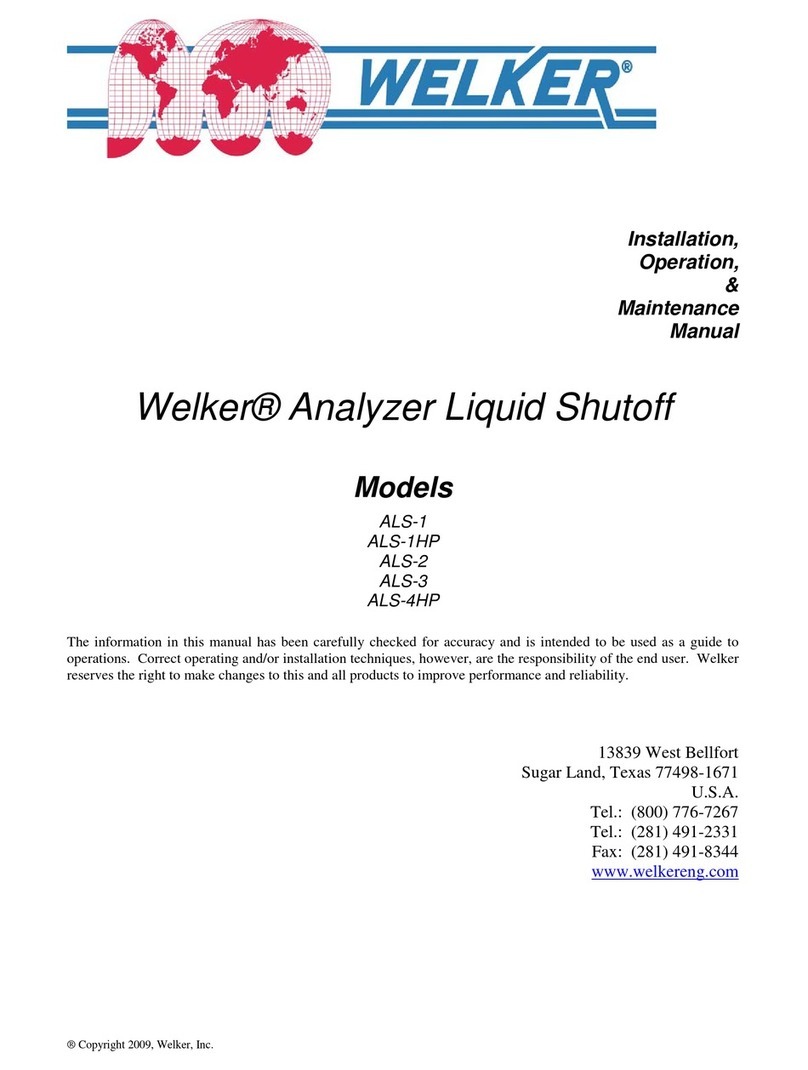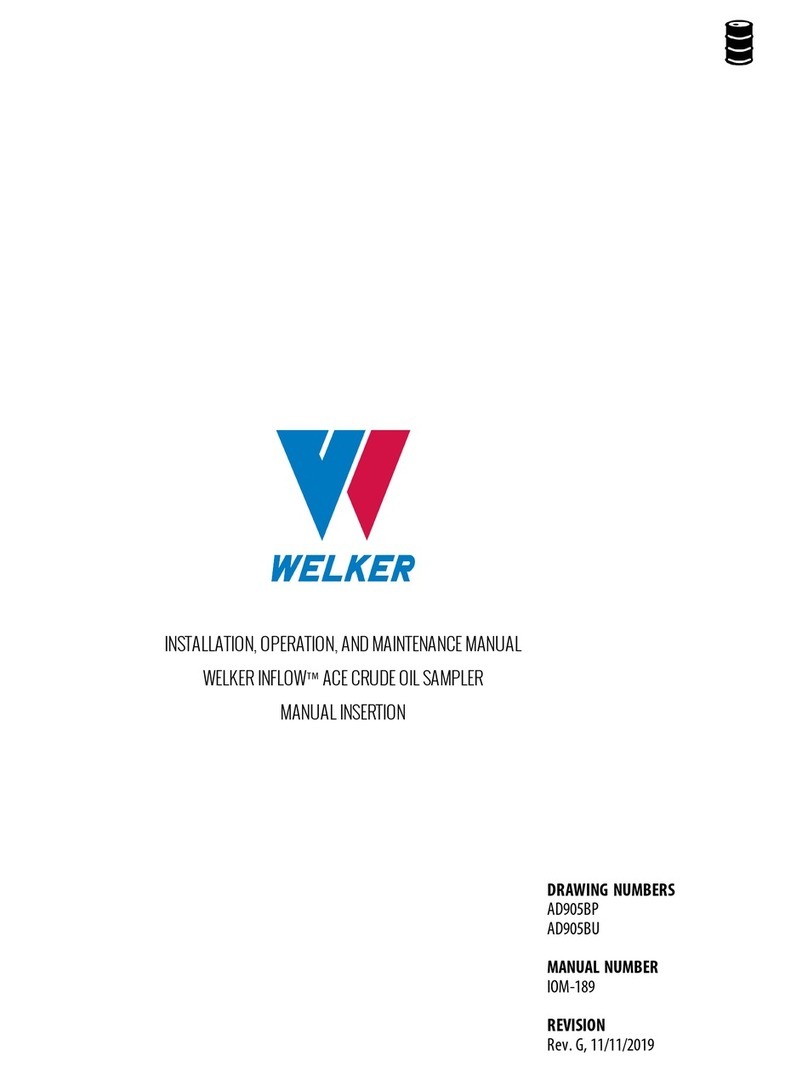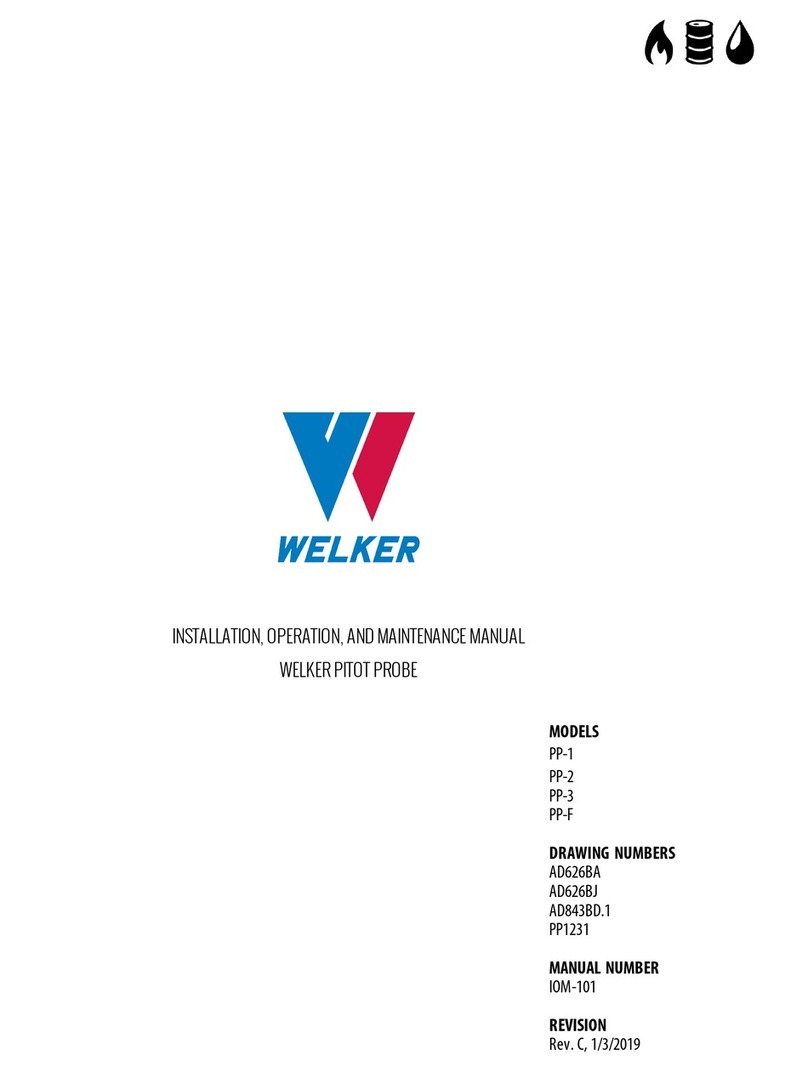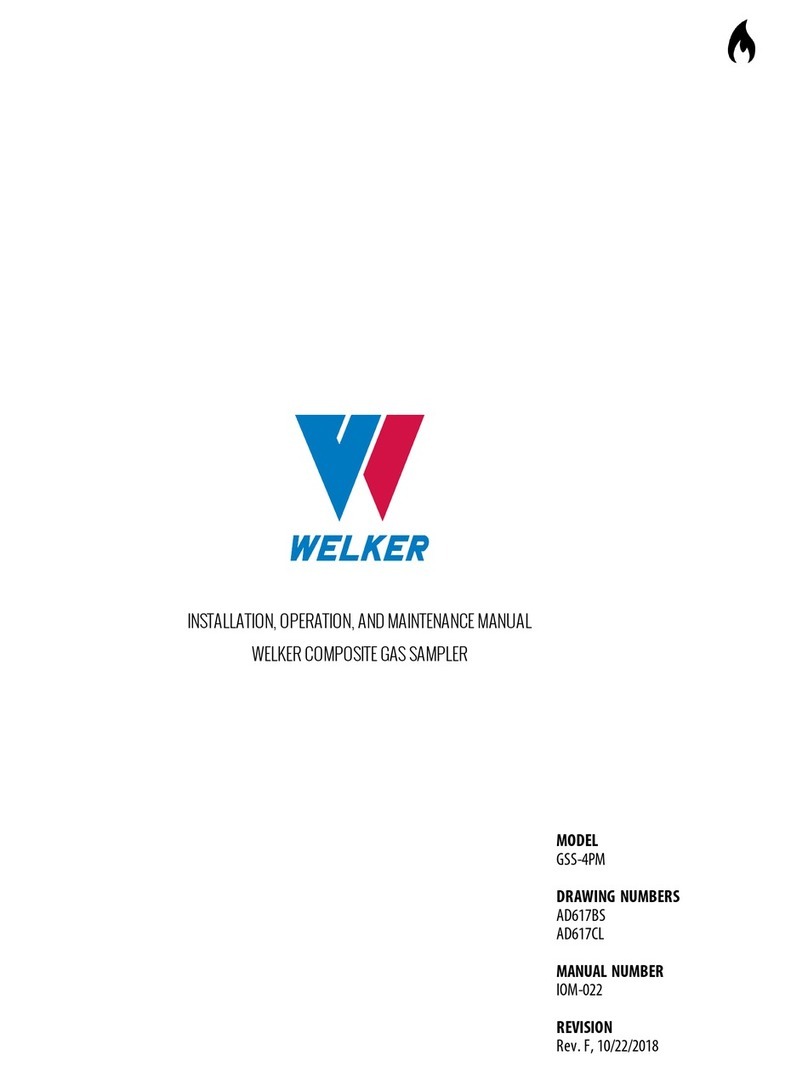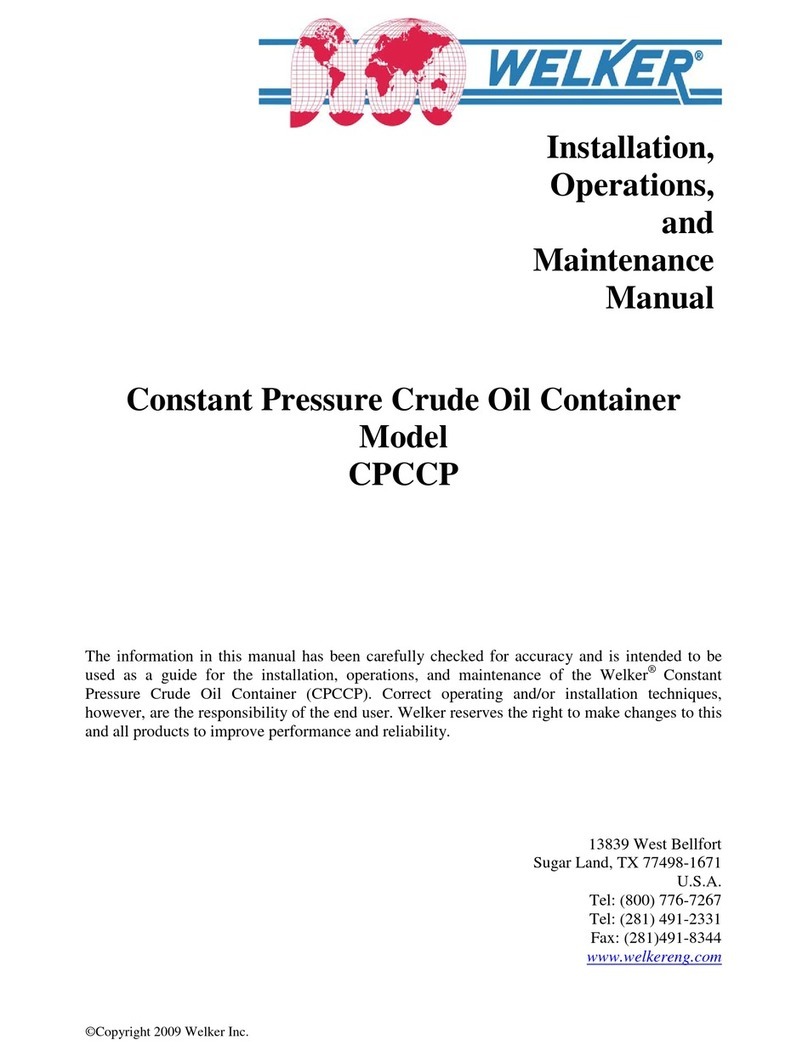
INSTALLATION &OPERATIONS
IOM-104 Page 8 of 10
APP-5
Rev: B
Last updated: 9/8/2009
As pipeline pressure will be pushing up on the shaft, you will have to firmly push down on
the unit in order to insert the shaft. Maximum Allowable Pressure is 500 psi at -20° F
to 100° F.
5. Thread the tubing union assembly tightly onto the base to hold the shaft in the pipeline.
Do not let go of the unit until the tubing assembly is securely tightened.
6. Connect the product out Valve A (P1) to the sample inlet on the sampler to the sampler
or a sampling system.
7. Connect the return to pipeline Valve B (P2) to the sample outlet on the sampler to the
sampler or a sampling system.
8. Open Valves "A" & "B".
2.4 HELPFUL HINTS
1. Avoid rough handling of the unit and bending of the shaft. The shaft has a polished
surface that travels through seals.
2. Operate the unit slowly and smoothly while inserting and retracting.
3. The entire unit should be treated with care
2.5 RETRACTING THE PROBE
Pipeline pressure will be forcing the shaft out of the pipeline. Failure to push down
on the unit while loosening the assembly could cause a rapid retraction of the
probe from pipeline, possibly resulting in injury. Maximum Allowable Pipeline
Pressure is 500 psi at -20° F to 100° F. Do not remove at pressures higher than
maximum.
1. Close Valves “A” and “B”.
2. Disconnect the sampler or sampling system.
3. Firmly push down on the unit while slowly loosening the tubing assembly from the
base.
4. Make sure the probe has completely retracted from the pipeline by pulling up on the
shaft until it stops.
The most common cause for repairs to an adjustable probe is due to the pipeline isolation
valve closing on the probe while the probe is still inserted into the pipeline. Please avoid
this practice.
5. Close the pipeline isolation valve.
6. Loosen and remove the unit from the pipeline isolation valve.
7. The unit is now ready for maintenance or to be moved to another location.












